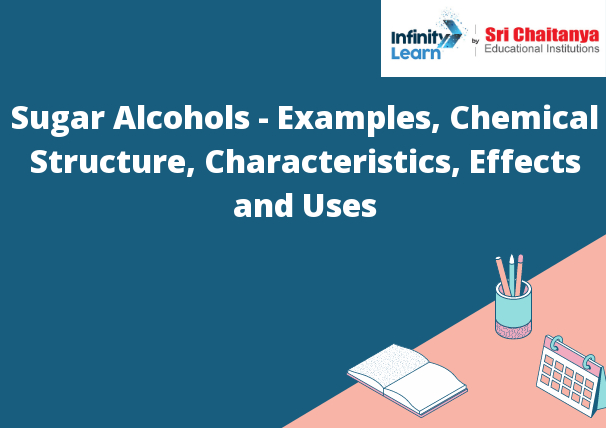Table of Contents
What is Sugar Alcohol? ;
Sugar alcohol is a type of carbohydrate that is found in many foods and drinks. It is also known as a polyol. Sugar alcohols are sweet, but they are not as sweet as sugar. They are also lower in calories than sugar.

Examples of Sugar Alcohols
Sugar alcohols are a type of carbohydrate that is found in many foods and drinks. They are often used as sweeteners because they taste sweet but have fewer calories than sugar. Sugar alcohols are also known as polyols.
Some common sugar alcohols include:
-Sorbitol
-Mannitol
-Xylitol
-Erythitol
-Lactitol
-Maltitol
-Hexitol
-Isomalt
-Sucralose
Sorbitol is the most common sugar alcohol. It is found in many fruits and vegetables, as well as in some processed foods and drinks. Sorbitol is used as a sweetener in many “sugar-free” products because it has fewer calories than sugar. It is also a laxative, which means that it can help to relieve constipation.
Mannitol is also a common sugar alcohol. It is found in many fruits and vegetables, as well as in some processed foods and drinks. Mannitol is used as a sweetener in many “sugar-free” products because it has fewer calories than sugar. It is also a diuretic, which means that it can help to increase the amount of urine your body produces.
Xylitol is a sugar alcohol that is found in many plants. It is used as a sweetener in many “sugar-free” products because it
General Chemical Structure of Sugar Alcohols
The general chemical structure of sugar alcohols is shown in the figure below. The sugar alcohols are composed of a sugar molecule and an alcohol molecule. The sugar molecule is typically a glucose molecule, and the alcohol molecule is typically an ethanol molecule. However, the sugar and alcohol molecules can be substituted with other molecules.
Synthesis of Sugar Alcohols
The synthesis of sugar alcohols generally proceeds via the reduction of a sugar derivative. The most common sugar derivative used in the synthesis of sugar alcohols is a sugar ketal. A sugar ketal is a compound that contains a ketone group and a hydroxyl group attached to the same carbon atom. The ketone group and the hydroxyl group are both part of a sugar molecule.
The reduction of a sugar ketal proceeds via the addition of a hydrogen atom to the ketone group. This addition of a hydrogen atom produces a sugar alcohol. The addition of a hydrogen atom to the ketone group is an example of a reduction reaction.
The synthesis of a sugar alcohol generally proceeds via the following steps:
1. The sugar ketal is reduced to the sugar alcohol.
2. The sugar alcohol is purified.
3. The sugar alcohol is used to produce a sugar derivative.
Characteristics of Sugar Alcohols
Sugar alcohols are not classified as carbohydrates because they are not digested and absorbed in the same way as other carbohydrates. They are low in calories and do not cause a spike in blood sugar. Sugar alcohols also have a laxative effect, which can cause stomach discomfort in some people.
Health Effects of Sugar Alcohols
There is no research that definitively links sugar alcohols to any specific health effects. However, since sugar alcohols are processed by the body in a similar way to sugar, it’s possible that consuming too many could lead to weight gain and related health problems like diabetes and heart disease. Additionally, sugar alcohols can sometimes cause stomach upset, bloating, and diarrhea.
Uses of Sugar Alcohols
There are a variety of uses for sugar alcohols. They are often used in food products as a sweetener. They can also be used as a bulking agent in place of sugar, as they have a lower calorie count. Additionally, they are often used in products marketed as low-carb or sugar-free, as they do not affect blood sugar levels as much as other sweeteners.





